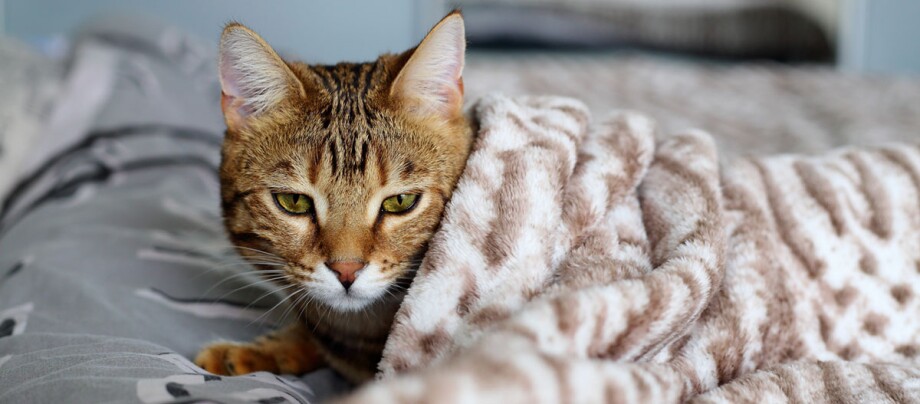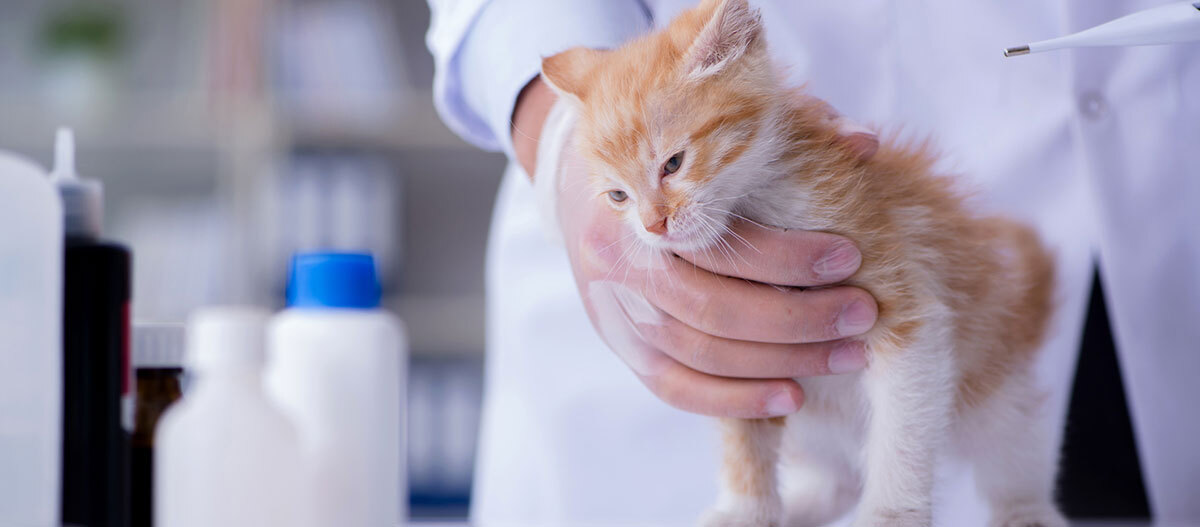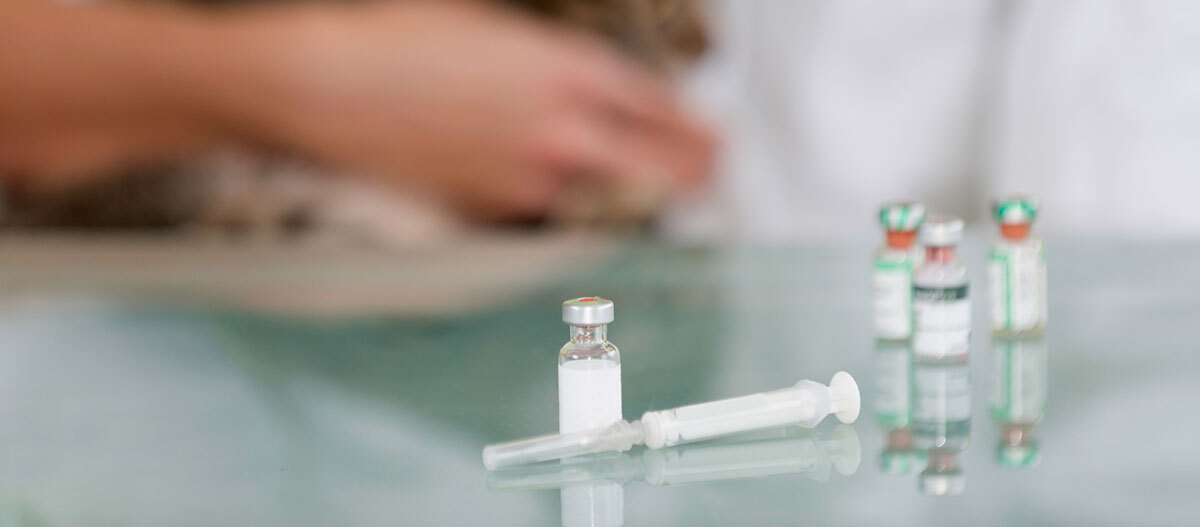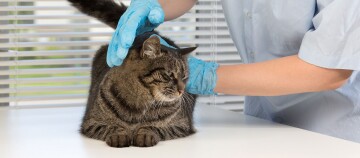Leukosis in Cats or Feline Leukaemia - When the Virus Attacks
17.10.2022 - Reading time: 5 minutes

Leukaemia, also known as "blood cancer", is a cancerous disease affecting the lymphatic system or blood formation - in humans as well as in cats. The perfidious aspect of this disease is its insidious progression with initially very non-specific symptoms. Feline leukaemia is the worst infectious disease that can affect a domestic cat: There is no cure for it. An infected house cat will have a limited life expectancy at the onset of the disease. Prevention is crucial so that your cat does not get infected in the first place.
What exactly is leukosis in cats?
Feline leukaemia is caused by the “feline leukaemia virus”, abbreviated as FeLV. FeLV is spread worldwide and can infect cats of all breeds. The virus multiplies in the lymph tissue of the infected animal and uses that as a base from where to inflict serious damage. The effects of the disease can vary greatly. Transmission takes place from animal to animal via blood and saliva. When the animals groom each other, lick each other, cuddle each other or bite each other in a fight, there is a high risk of infection. The virus can also be transmitted via faeces, urine and tear fluid or eye discharge. There have been cases of transplacental infections, which is to say, infection of unborn kittens in the womb of an infected cat, also.
The virus is extremely infectious and can spread quickly in non-immune cat populations. Apart from outdoor cats, the risk group includes young cats below the age of two, as well as animals that are already immunocompromised. For a cat that has contracted the disease, the remaining life expectancy is a maximum of three years. At the current state of medical research, there are no prospects of a cure. The veterinarian detects the infection indirectly via antibodies that show up in the blood. A conclusive finding of feline leukaemia is important to avoid confusion with other infectious diseases that show similar clinical signs.

What are the symptoms of feline leukaemia?
Several years may pass between the infection and the outbreak of feline leukaemia, in some fortunate cases the disease does not break out at all. Every infected cat is a carrier of the virus and can infect other animals, however. The first cat leukaemia symptoms after the outbreak of the actual disease are relatively general. The animal appears fatigued and tired and shows a loss of appetite. The virus itself may show up in the organism in various ways: It can produce malignant tumours in the lymphatic system or alter the blood count, as a result of which there is immune deficiency, signs of paralysis and severe kidney disease. Affected animals often have extremely pale mucous membranes. The first feline leukaemia symptoms of tumour formation are general apathy, a reluctance to eat and weight loss. Further symptoms will depend on the organ that is affected.
A cancerous focus in the gastrointestinal tract can cause vomiting and chronic diarrhoea; if the tumour exerts pressure on the trachea or oesophagus, there is shortness of breath and difficulty in swallowing. If the bone marrow is damaged, there may be general weakness, loss of appetite, jaundice, anaemia and fever.
If the virus targets the blood, it causes haematological changes there: The immune system is weakened, and this will be followed by increased susceptibility to harmless germs and pathogens that are actually harmless. The cats suffer from nasal catarrh, therapy-resistant cat flu, inflammation of the nasal mucosa and gums, and painful claws.

Are there any protective measures that one can take against feline leukaemia?
Complete recovery for an animal suffering from feline leukaemia is not possible. It is not possible to cure the disease. At best, palliative treatment can alleviate the animal’s symptoms. Chemotherapy and radiotherapy or administering virus-suppressing drugs can prolong the life of the affected cat or delay the outbreak of the disease. However, you can take precautions: There is a reliable vaccination that should be given especially to outdoor cats.
Before vaccination, however, it must first be checked whether there is already an infection present, because then the vaccination would be ineffective. A kitten should be vaccinated in the ninth and thirteenth week of life, after which the vaccination is boosted annually. However, it is not completely certain to what extent the vaccination protection is effective if the vaccinated cat is in permanent contact with diseased animals or permanent excretors, i.e. cats that are – possibly unnoticed – infected but not yet diseased. If you have a group of indoor cats, you should have all of them tested for FeLV.
The feline leukaemia virus is highly contagious. Outside the body, however, the virus becomes unstable after just a few minutes, so indirect transmission via objects such as food bowls is unlikely. In addition, all common dishwashing detergents and disinfectants can eliminate the virus on surfaces, so that infection through smear infection is virtually impossible with good hygiene. Feline leukaemia is not dangerous to other animals or humans. Cats can only become infected through direct contact with each other. However, this also means that a sick cat should no longer be allowed outdoors to avoid endangering other cats.
What can I do for my cat who is suffering from leukosis?
If your cat has not yet developed leukosis, or if it is only in the early stages, you can take simple measures to help improve its quality of life, and delay the onset of the disease. Pamper the cat, give it time to play and cuddle. Strengthen the cat’s immune system with balanced, high-quality food, a relaxed living environment, species-appropriate activities and lots of love. All this will give the cat a precious lifespan.



